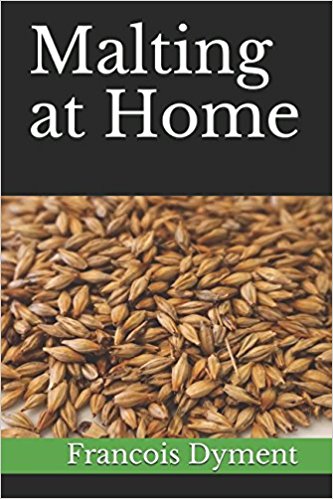I’m often asked “How soon can I use my malt after kilning it or roasting it?” I’ve read a lot of literature that states the malt needs to rest before being used, but I haven’t found a really good answer as to why or what changes happen to the malt during this resting period. In John Malletts book Malt he states that “Freshly kilned malt has poor performance in the brewhouse (most likely because of uneven moisture distribution throughout the batch)”. Apparently, milling and lautering are easier when moisture levels have “equalized”. Jean DeClerck in A Textbook of Brewing describes claims that freshly kilned malt is said to saccharify less and give a turbid wort and may also give rise to a poor fermentation and colloidal haze in the beer. He goes on to state that there is not much scientific data to back this claim but theorizes that it might have something to do with the slight re-absorption of moisture. He also points out that there has been shown to be a rise in diastatic power during the storage period and suggests that this is due to the liberation of amylase enzymes from “some kind of combination.” Recently I came across this article from1979 by H. Rennie and K. Ball on the Influence of Malt Storage on Wort Seperation. By measuring the pressure of flow through the mash beds of new malt vs. aged malt they concluded that there is a significant difference in wort separation after three weeks of aging. Personally I haven’t noticed any problems using malt soon after kilning but I haven’t done any side by side comparisons so I can’t really say for sure if it makes a difference, this might be worth another blog post. But if you can wait the three weeks, then why not it, won’t hurt.
However for roasted malts I can say with certainty that using freshly roasted malts will give you better flavour than anything you can buy in a store. I often use freshly roasted malt and barley and I think it has greatly improved my beers. The flavour of malt or barley right after it’s roasted is rich and bold. The flavour of most of the roasted stuff I’ve bought in comparison is cardboardy and stale. If you had the choice of drinking coffee made from freshly roasted beans or from a can of store bought coffee, I think most would agree, the freshly roasted stuff is going to be better.
In this video I make debittered black malt by using hulled barley. This is barley that has had it’s husk removed. Not the same as pearled barley, that’s processed even further. It was hard to find, I had to drive 40 minutes to get it but it should make for a few experiments. The tea I made with it tasted really good, it’s an even better caffeine free coffee substitute than roasted barley because it’s smoother.
For the hulled barley malt:
- Steeped to 42% at 10C 50F
- Germinated 5 days at 13C 55F
- 24 hours with fan at room temp 21C 70F
- 2 hours at 175F (79C)
- 1 hour at 185F (85C)
- 2 hours at 190F (88C)
Debittered Black Patent
- Hulled barley malt roasted at 375F for 1 hour then 30 min at 450F (232C) for a Carafa II style roast 1 hour at 375F then 15 min at 450F (232C).

